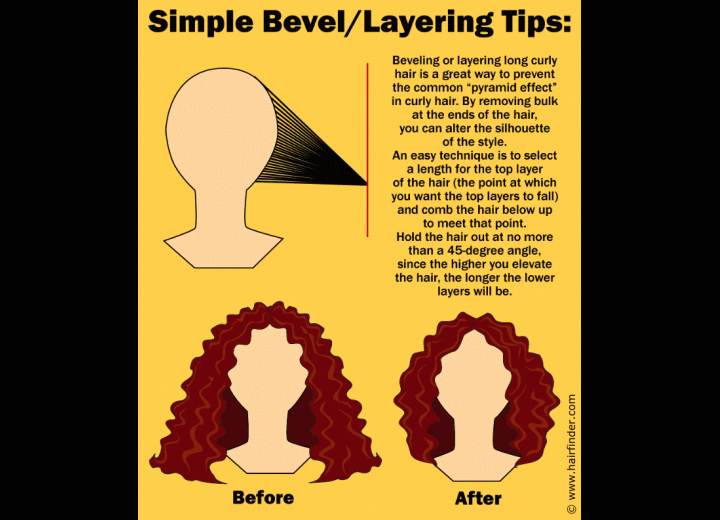Beveled Ends Technique

A: Absolutely! One of the easiest and most effective techniques for beveling curly hair at home involves working in narrow sections while maintaining controlled elevation.
1. Determine Your Desired Length: Start by selecting the length you want for the top layers of your hair. This will serve as your guide for the rest of the cut.
2. Work in Small Sections: Take thin, manageable sections (about 1–2 inches wide) and gently comb the hair underneath upward to meet the top layer. This helps blend the layers smoothly.
3. Control the Elevation: Keep the elevation of each section low - no more than 45 degrees - to create soft, shallow layers. The higher you lift the hair, the more dramatic the layering will be, which can lead to uneven lengths when your curls spring up after drying.
4. Maintain Tension: Curly hair can shrink significantly as it dries - sometimes by 4 inches or more! To avoid ending up with unexpectedly short hair, use the lightest possible tension when holding each section. Simply support the hair without stretching it, then trim conservatively.
5. Smooth Cutting: Before making any cuts, ensure the hair is combed smoothly (but not pulled tight) to avoid jagged edges. Use sharp shears for a clean finish, and consider point-cutting (cutting into the hair at an angle) to soften the ends further.

Pro Tip: When in doubt, cut less than you think you need. It’s much easier to go back and trim a little more than to wait months for over-cut hair to grow back. If you’re new to cutting curly hair, try trimming just a half-inch at a time, allowing your hair to dry completely between cuts to assess the true length.
For extra reassurance, you might also try the "piggyback" method. Instead of cutting all layers at once, cut the longest layer first, then use it as a guide for the shorter layers above. This helps maintain balance while keeping the overall shape intact.
©Hairfinder.com
See also:
How to layer long hair
The difference between an beveled and a layered haircut